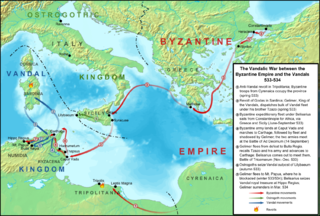The 470s decade ran from January 1, 470, to December 31, 479.
The 430s decade ran from January 1, 430, to December 31, 439.
The 450s decade ran from January 1, 450, to December 31, 459.
The 440s decade ran from January 1, 440, to December 31, 449.
The 460s decade ran from January 1, 460, to December 31, 469.

Year 455 (CDLV) was a common year starting on Saturday of the Julian calendar. At the time, it was known as the Year of the Consulship of Valentinianus and Anthemius. The denomination 455 for this year has been used since the early medieval period, when the Anno Domini calendar era became the prevalent method in Europe for naming years.
Year 471 (CDLXXI) was a common year starting on Friday of the Julian calendar. At the time, it was known as the Year of the Consulship of Novus and Probianus. The denomination 471 for this year has been used since the early medieval period, when the Anno Domini calendar era became the prevalent method in Europe for naming years.

Leo I, also known as "the Thracian", was Eastern Roman emperor from 457 to 474. He was a native of Dacia Aureliana near historic Thrace. He is sometimes surnamed with the epithet "the Great", probably to distinguish him from his young grandson and co-augustus Leo II.

Flavius Ricimer was a Romanized Germanic general who effectively ruled the remaining territory of the Western Roman Empire from 461 until his death in 472, with a brief interlude in which he contested power with Anthemius. Deriving his power from his position as magister militum of the Western Empire, Ricimer exercised political control through a series of puppet emperors.

Procopius Anthemius was western Roman emperor from 467 to 472.

Basiliscus was Eastern Roman emperor from 9 January 475 to August 476. He became magister militum per Thracias in 464, under his brother-in-law, Emperor Leo. Basiliscus commanded the army for an invasion of the Vandal Kingdom in 468, which was defeated at the Battle of Cape Bon. There were accusations at the time that Basiliscus was bribed by Aspar, the magister militum; many historians dismiss this, instead concluding that Basiliscus was either incompetent or foolish for accepting Vandal King Gaiseric's offer of a truce, which the latter used to construct fireships. Basiliscus's defeat cost the Eastern Empire 130,000 pounds (59,000 kg) of gold, causing the empire to hover above bankruptcy for 30 years. When Basiliscus returned to Constantinople, he sought refuge in the Church of St. Sophia. His sister, Empress Verina, secured him a pardon and he left the church to retire in Neapolis.

Placidia was a daughter of Valentinian III, Roman emperor of the West from 425 to 455, and from 454/455 the wife of Olybrius, who became western Roman emperor in 472. She was one of the last imperial spouses in the Roman west, during the Fall of the Western Roman Empire during Late Antiquity.
Dengizich, was a Hunnic ruler and son of Attila. After Attila's death in 453 AD, his Empire crumbled and its remains were ruled by his three sons, Ellac, Dengizich and Ernak. He succeeded his older brother Ellac in 454 AD, and probably ruled simultaneously over the Huns in dual kingship with his brother Ernak, but separate divisions in separate lands.
TheodoricStrabo was a Gothic chieftain who was involved in the politics of the Eastern Roman Empire during the reigns of Emperors Leo I, Zeno and Basiliscus. He was a rival for the leadership of the Ostrogoths with his kinsman Theoderic the Great, who would ultimately supplant him.

Marcellinus was a Roman general and patrician who ruled over the region of Dalmatia in the Western Roman Empire and held sway with the army there from 454 until his death.

The Vandalic or Vandal War was a conflict fought in North Africa between the forces of the Byzantine, or East Roman, empire and the Vandalic Kingdom of Carthage, in 533–534. It was the first of Justinian I's wars of reconquest of the lost Western Roman Empire.
Heraclius of Edessa was an Eastern Roman Empire general who took part in the failed campaign against the Vandals in 468.

Gaiseric, also known as Geiseric or Genseric was King of the Vandals and Alans (428–477), ruling a kingdom he established, and was one of the key players in the difficulties faced by the Western Roman Empire during the 5th century. Through his nearly 50 years of rule, he raised a relatively insignificant Germanic tribe to the status of a major Mediterranean power. His most famous exploit, however, was the capture and plundering of Rome in June 455. He also defeated two major efforts by the Romans to overthrow him, the first one by the emperor Majorian in 460 or 461, and another by Basiliscus at the Battle of Cape Bon in 468. After his death in Carthage, Gaiseric was succeeded by his son Huneric.

The Battle of Cape Bon was an engagement during a joint military expedition of the Western and Eastern Roman Empires led by Basiliscus against the Vandal capital of Carthage in 468. The invasion of the kingdom of the Vandals was one of the largest amphibious operations in antiquity, with 1,113 ships and over 50,000 personnel.
The history of the Later Roman Empire covers the history of the Roman Empire from the beginning of the rule of Diocletian in 284 AD and the establishment of the Tetrarchy in 293 AD by Diocletian to the death of Heraclius in 641 AD.










